Rosh Hashana and Sukkot with the Rosenfelds
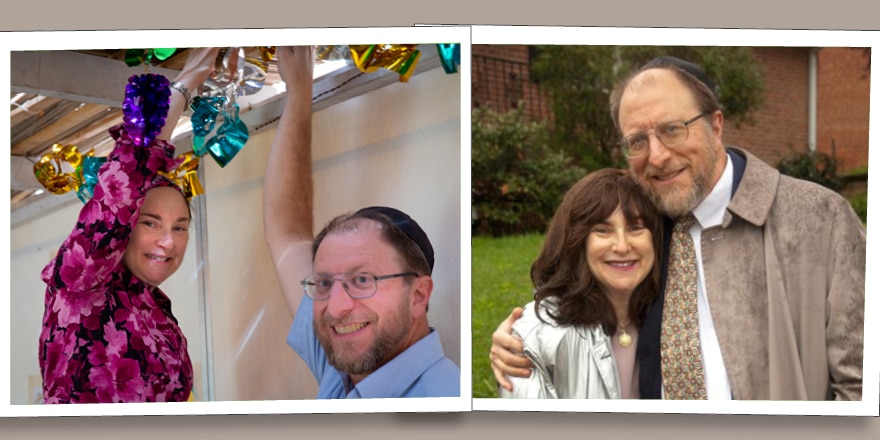
Jewish Roots on Hoover Road
Monica Rosenfeld and family are a strong thread in the fabric of the Indianapolis Jewish community: Her father Mark Hasten (of blessed memory) and his brother Hart co-founded Hasten Hebrew Academy 50 years ago, just down the street from the JCC on Hoover Road. Add in the fact that Congregation B’nai Torah is also on the same street, and that for Orthodox Jews (as the Rosenfelds are) living within walking distance of their synagogue is a must, and you’ll understand why the Rosenfelds have spent a lot of time involved with all the Jewish organizations on this block. All of their (now grown) children attended Hasten Hebrew Academy, they’re still members of Congregation B’nai Torah to this day, Monica used to be librarian at the Maurer Jewish Community Library in the former Bureau of Jewish Education, and, of course, they frequent the JCC.
“I think the institutions have to support each other, augment each other. We’ve always felt it was important to support a Jewish community center,” Monica said. “Our kids have gone to day camp at the JCC, they’ve done swimming lessons and gymnastics, played soccer and basketball, and now when my grandchildren are in town I take them to have swimming lessons. It’s very important to us to have a kosher café; it’s the only place that we can go to eat something in this city. I think it’s an important hub of Jewish life.” Monica herself exercises at the JCC (she’s done both Group Ex classes and private Pilates Reformer sessions), she and her mother very much enjoyed the last Earth Day at the J celebration, and the family has also rented JCC spaces for special events.
Rosh Hashana Redux

The Rosenfelds typically spend Rosh Hashana (the Jewish New Year, this year September 25-27) at synagogue services. So staying home for Rosh Hashana for the past couple years because of COVID “was very strange for us,” Monica said. “We don’t Zoom services because it’s a holy day so we don’t use electronic devices. But we had machzorim (special holiday prayer books), and we had the shofar (ram’s horn) blown for us, and we were able to say the Yizkor prayer for people who have passed away in memory of my father.”
And of course, they still ate the special customary holiday foods. “When I was growing up, what I knew about, because that’s what my family did, was apples dipped in honey (to have a sweet new year) and pomegranates (the seeds represent multitudes, so that our good deeds should be multiplied),” Monica said. “My husband and I are pretty much pure Askenazic (of Eastern European Jewish origin), but when I became an adult, I read about Sephardic (Western European/Mediterranean Jewish) customs regarding certain foods to eat to have a successful new year that are actually mentioned in the Talmud (books of Jewish law). Things like pumpkins or gourds, beans, green leafy vegetables, fish (sometimes just the head, because Rosh Hashana is literally “the head of the year”), beets, black-eyed peas – foods that are high in omega-3, beta-carotene, complex carbohydrates; not brisket and kugel (casserole).” The Talmud is thousands of years old, so perhaps ahead of its time in terms of healthy eating!
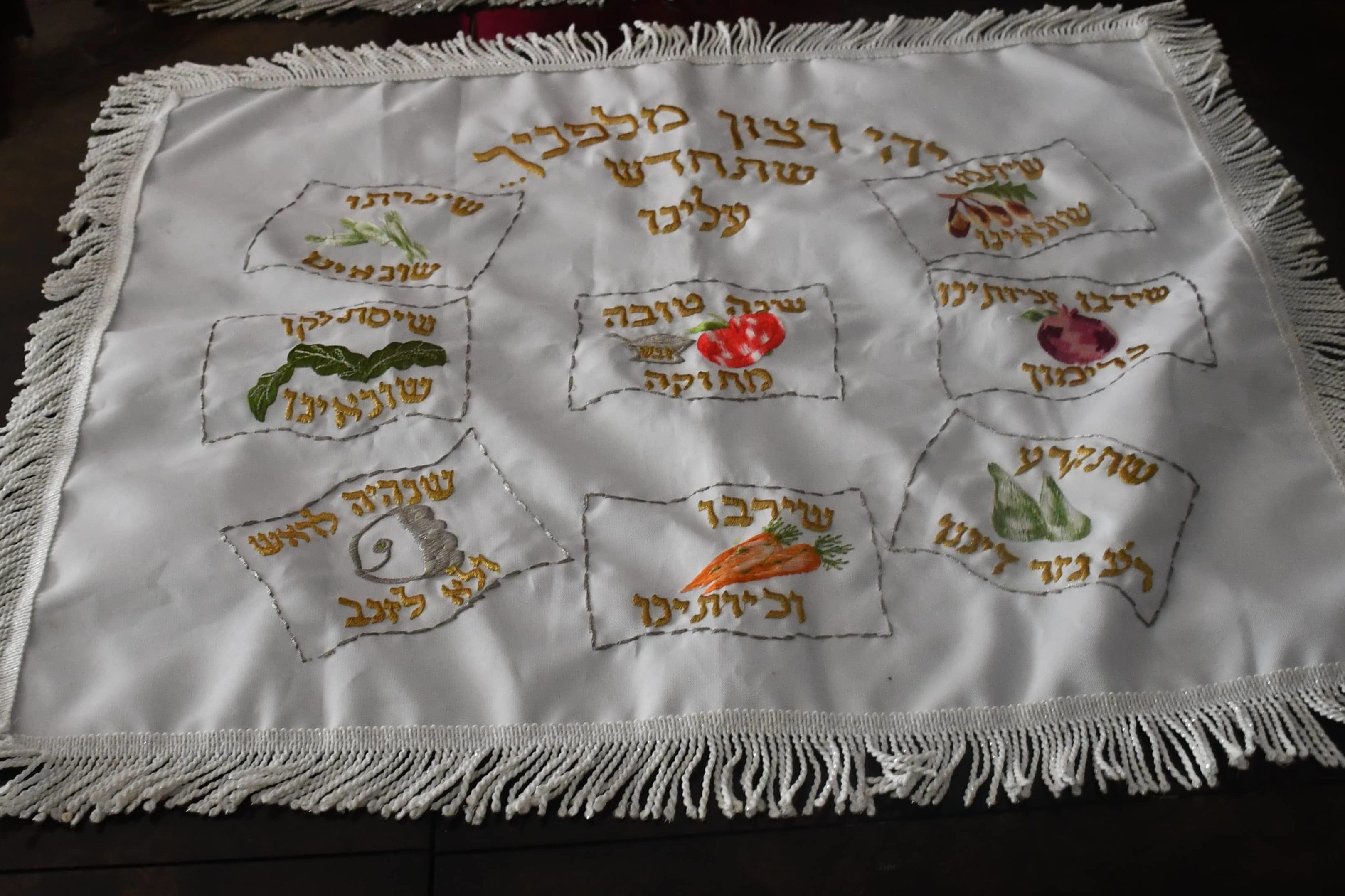
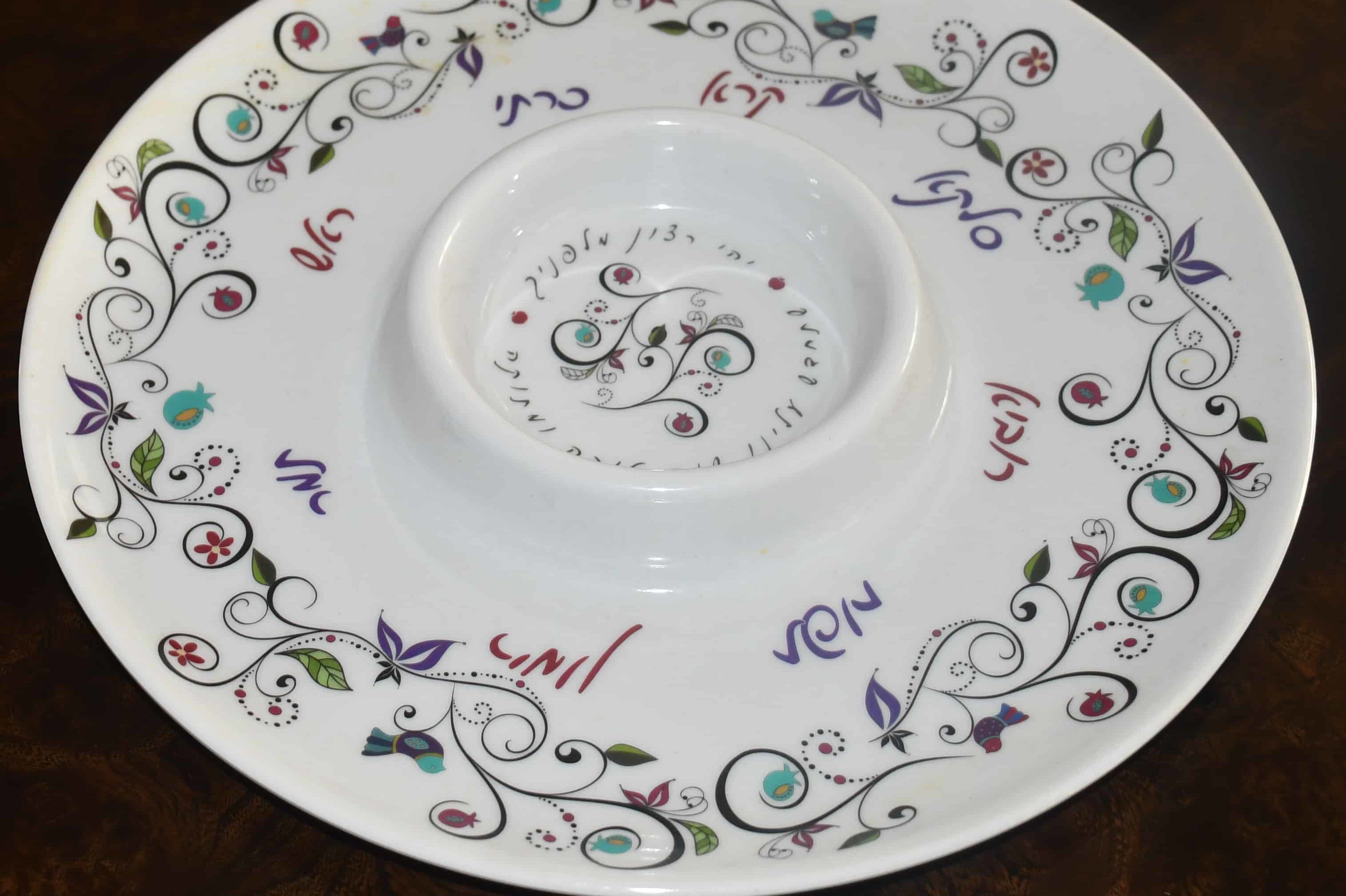
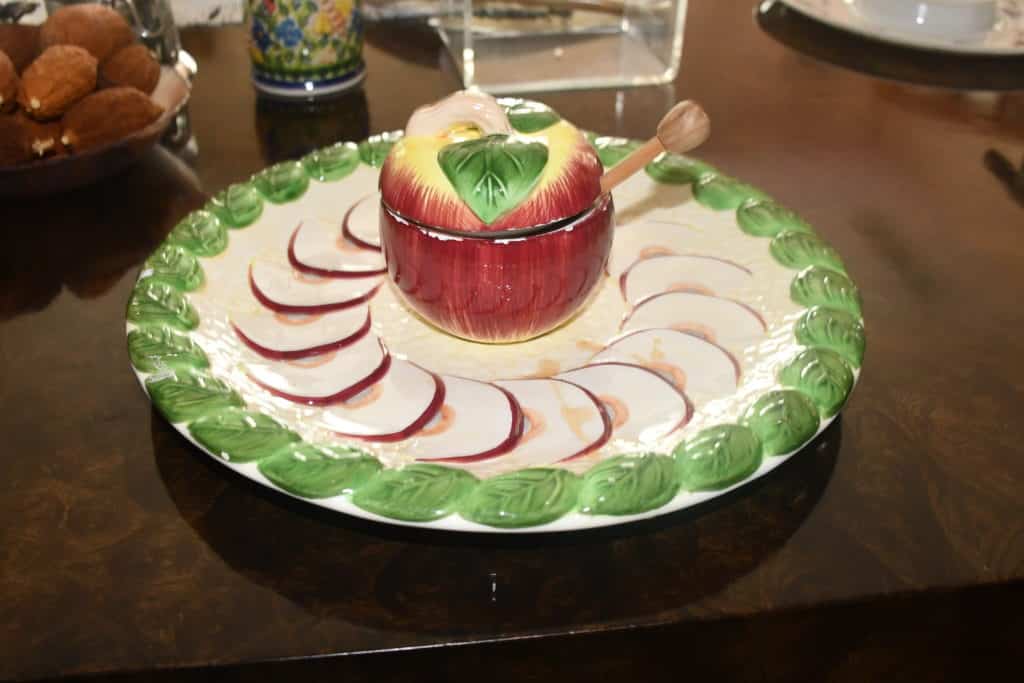
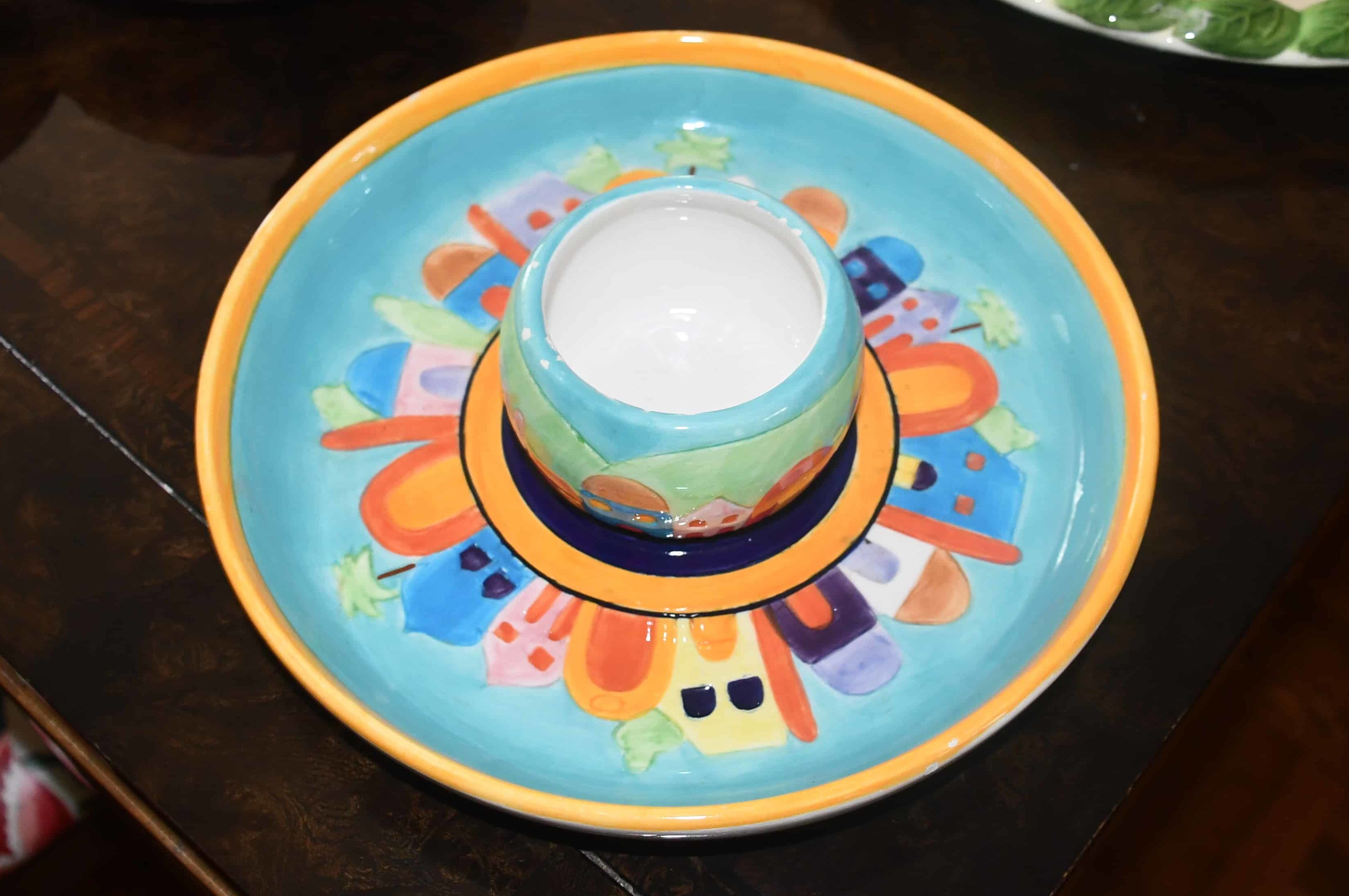

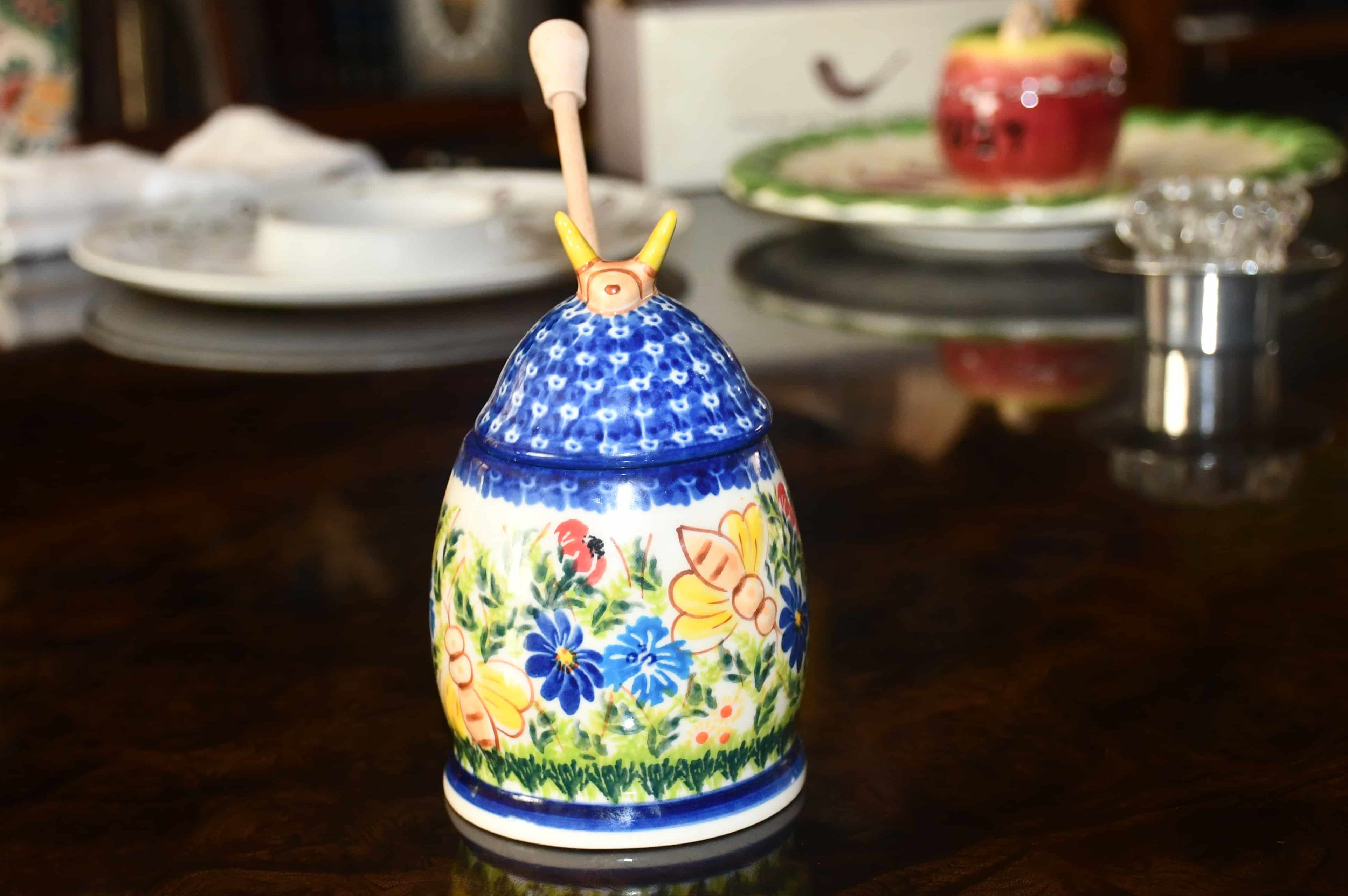

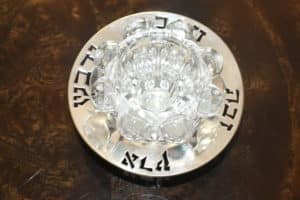
The Rosenfelds are spoiled for choice when it comes to honey dishes
Chag Sukkot Sameach (Happy Sukkot)
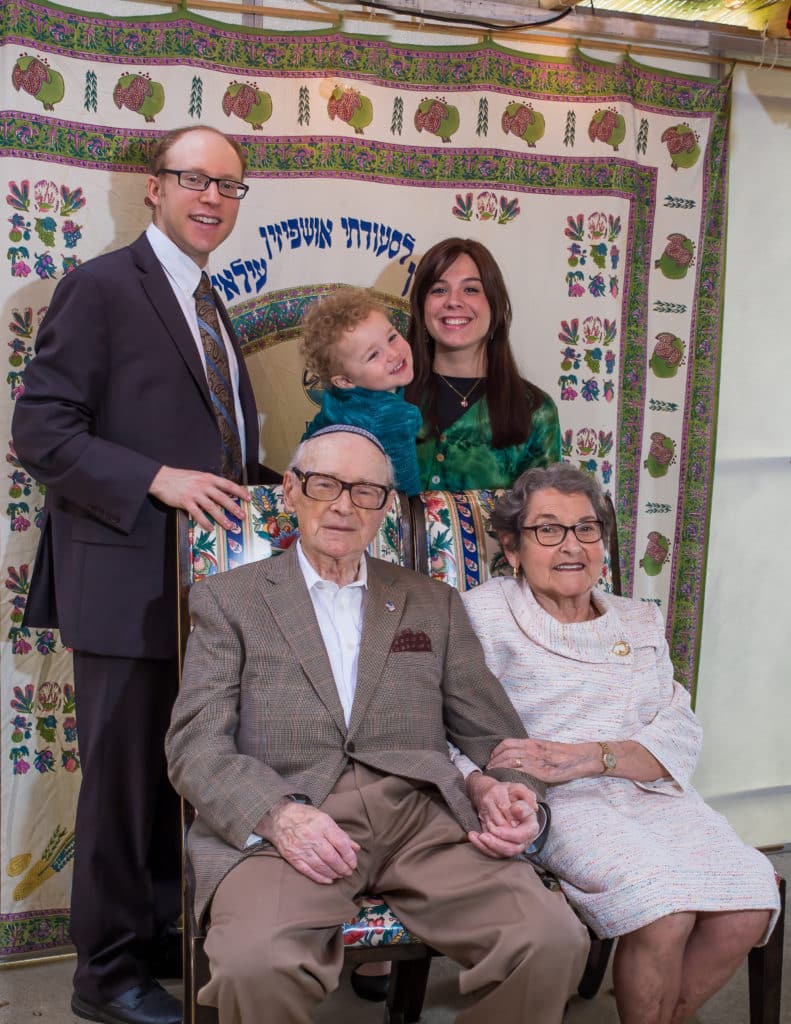
For the week-long holiday of Sukkot (a festival commemorating the harvest, this year October 9-16), the Rosenfelds build their own sukkah (bamboo hut) every year. “You’re supposed to really be living in it; it’s supposed to remind us of how people lived when they were traveling across the desert and during harvest time,” Monica said. “My kids actually slept out there! They had sleeping bags, they had cots. It wasn’t so fun sometimes when it rained in the middle of the night and everybody ran inside. But we decorate the sukkah, so by the time the kids had been staying there for a while and meals had been eaten out there, it really did look like someone had been living there.”
As with other Jewish holidays, Sukkot is an excellent time to have guests over to share in the celebrations. “Of course things were a little curtailed because of COVID, but once everybody got vaccinated we felt better about inviting people and having them come to our sukkah,” Monica said. And for years, she took her hospitality one step further and held a lunch in the sukkah for residents of Jewish nursing home Hooverwood Living and their caregivers. “That’s been a very nice thing, to invite people that might not have a chance to be in a sukkah in someone’s home to have that experience,” she said.

Shana Tova (have a good new year) and Chag Sameach (happy holidays)!
Beginner’s Guide to the High Holidays
Rosh Hashana
This holiday is the Jewish New Year, which marks the beginning of the 10-day period of prayer, self-reflection, and repentance. It is celebrated on the first (sometimes second) day of the Hebrew month Tishrei (in September). Rosh Hashana marks the first of the Jewish High Holidays. A tradition of the Jewish faith is to eat apples with honey at this time, representing hopes for a sweet new year. Another common food eaten on this holiday are pomegranates, symbolizing to be fruitful as it has many seeds.
A common greeting used for this time of year is the Hebrew phrase “L’shana tova”, meaning “a good year”
Yom Kippur
Yom Kippur, as known as the Day of Atonement, is the holiest day of the Jewish year. It is celebrated on the tenth day of Tishrei, concluding the High Holidays. This is a time for Jews to atone and repent for the past year. Jews will traditionally observe this holiday over a twenty-five hour period of fasting (if they are able) and refraining from work, spending a majority of the day in synagogue services. They will ask God for forgiveness of their sins to secure their fate and cleanse their souls of bad intentions and wrong doings.
The best greeting to say to someone observing this holiday is “have a meaningful fast.” If the person is not fasting, you can say “Good Yuntif” or “Yom Tov”, Yiddish and Hebrew respectively for “have a good holy day”.
Sukkot
Sukkot is celebrated on the fifteenth month of Tishrei (varies from late September to late October). It is the only festival associated with an explicit commandment of rejoice. It represents a time to give thanks for the bounty of the earth during the fall harvest. At this time, Jews will build “sukkahs”, an outdoor structure with walls that are typically covered in some sort of plant overgrowth, such as palm leaves (symbolic plants are also featured in rituals throughout the holiday via the use of the lulav ([palm, myrtle and willow branches] and etrog [a lemon-like citrus]). Jews will spend much of their time in these huts in order to feel more connected with the earth and give thanks for what the earth has offered them.
To wish a happy Sukkot (or any other holiday), say “Chag sameach” (“Happy Holiday” in Hebrew).
Shemini Atzeret/Simchat Torah
Shemini Atzeret and Simchat Torah mark the end of Sukkot and the completion of the annual Torah reading for the Jews. These holidays celebrate the love for God that the Jews have and it is a time to rejoice. On Simchat Torah, after reading the final chapter of the Torah, Jews will then immediately start again at the beginning, reminding us that the Torah is a circle; it always continues even when it is over.
Following the completion of Torah readings, there is a celebration where Jews will lift up the Torah scrolls, singing and dancing with them around the synagogue.
Learn more about these and other Jewish holidays at JCCindy.org/holidays.